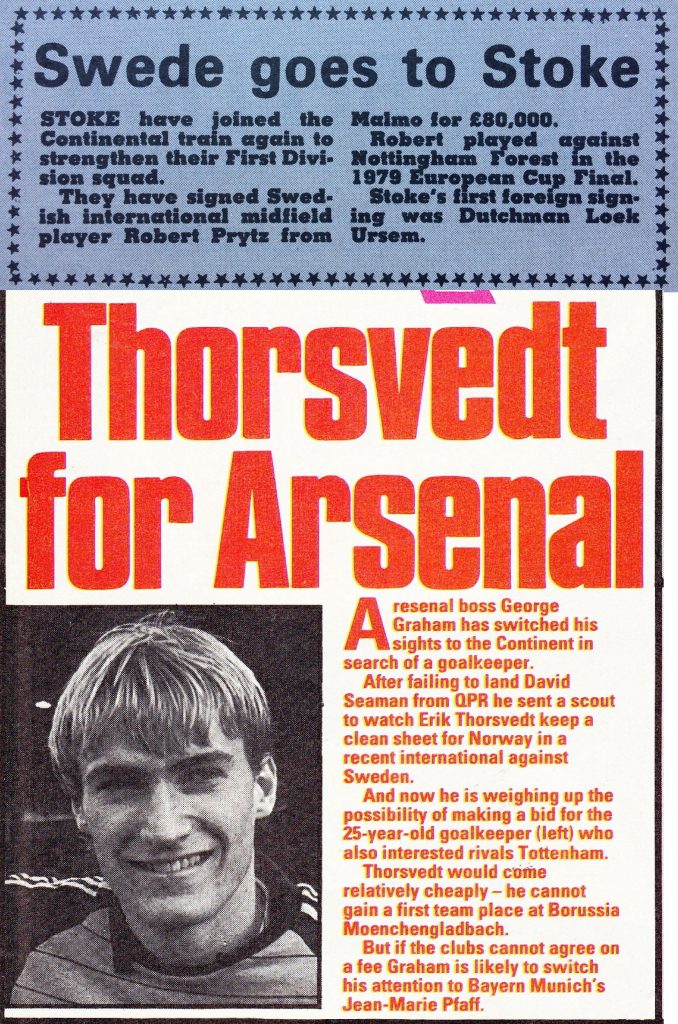Scandinavia and the Nordic Nations: Foreign Players in the Football League
Scandinavia and the Nordic nations have a long history of providing players to the Football League. As they remained amateurs in Denmark, Finland, Iceland, Norway and Sweden, they were able to escape the effective historic ban on foreign footballers in England.
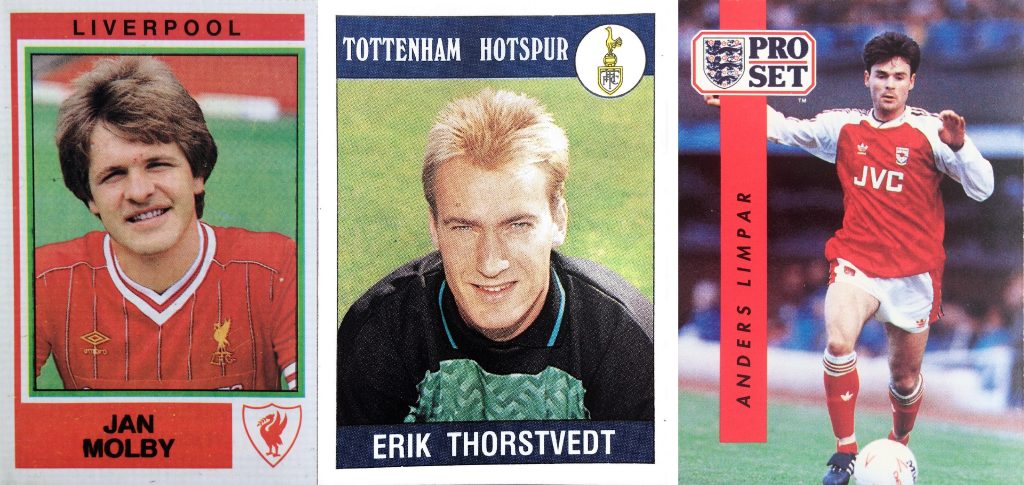
It was natural that players would continue to move after restrictions were formally lifted in 1978 – with many able to speak the language, well suited to the climate and physical nature of English football and generally available at bargain prices. Throughout the 1980s, some of English football’s most notable imports arrived from the northern European nations as Scandinavia emerged onto the international scene. By the 1990s, speaking of his Norwegian signing Gunnar Halle, Oldham manager Joe Royle stated, “Players from that part of the world are rapidly becoming a major force in this country.”
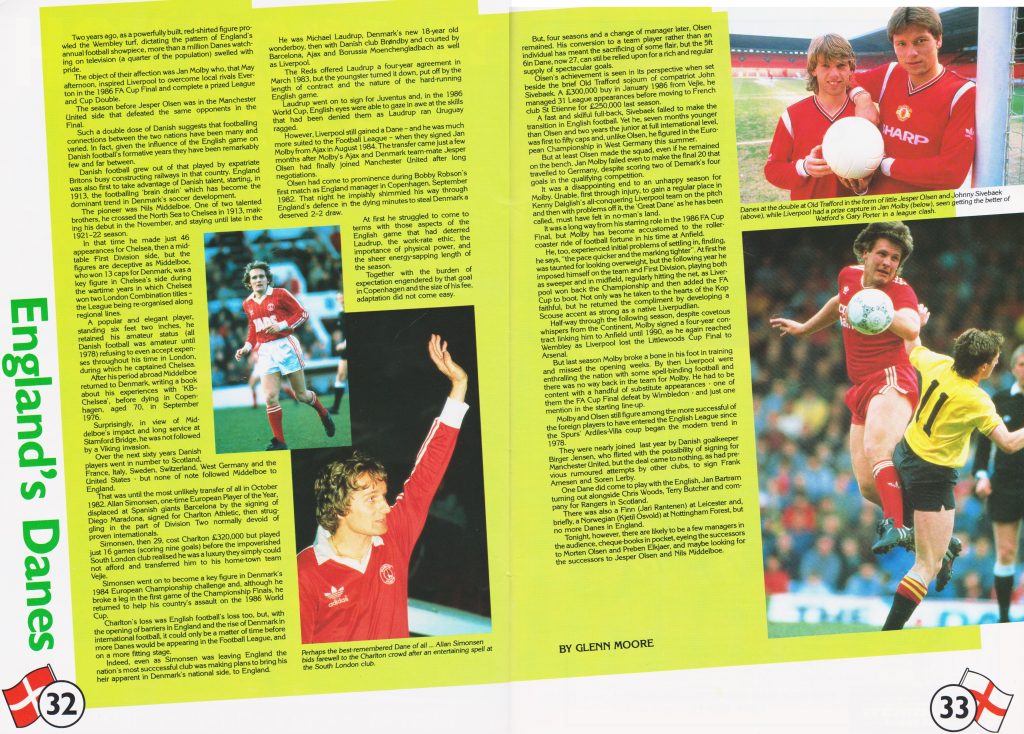
Several Danes had already plied their trade in the Football League, from Nils Middleboe in 1913 to Ben Arentoft at Newcastle and Blackburn in the 1970s. Post-1978, Charlton signed the Danish duo of Viggo Jacobsen and Johnny Ostergaard (a former ice hockey international) during the 1979-80 season. Their next signing of a player from Denmark in 1982 was considerably higher-profile, former European Footballer of the Year Allan Simonsen. Bringing Simonsen from Barcelona to the cash-strapped Second Division club for £320,000 was an ambitious gamble by chairman Mark Hulyer which ultimately back-fired. The increase in attendances at The Valley was nowhere near enough to cover the Danish star’s wages, in the region of £80,000 a year, and he eventually returned to Denmark with Vejle only five months later. Hulyer left soon after with Charlton even deeper in debt and struggling to survive; they were forced to leave their historic home of The Valley in 1985.
While Simonsen was Denmark’s superstar of his era, a new generation was emerging in the 1980s to shine at the 1984 European Championship and 1986 World Cup. Many Danish players moved to Ajax, including Frank Arnesen, Soren Lerby, Jan Mølby and Jesper Olsen. After a move for Denmark’s new star Michael Laudrup fell through in 1983, the following summer Liverpool signed Mølby – he was to thrive at Anfield for a decade. Also in the summer of 1984, Manchester United brought Olsen to England – however the gifted winger struggled to adapt to the physical side of First Division football, and the heavy Old Trafford pitch of the day. During his four-year stay, Olsen was joined for a time by full-back John Sivebæk, who scored the first goal of Alex Ferguson’s reign.
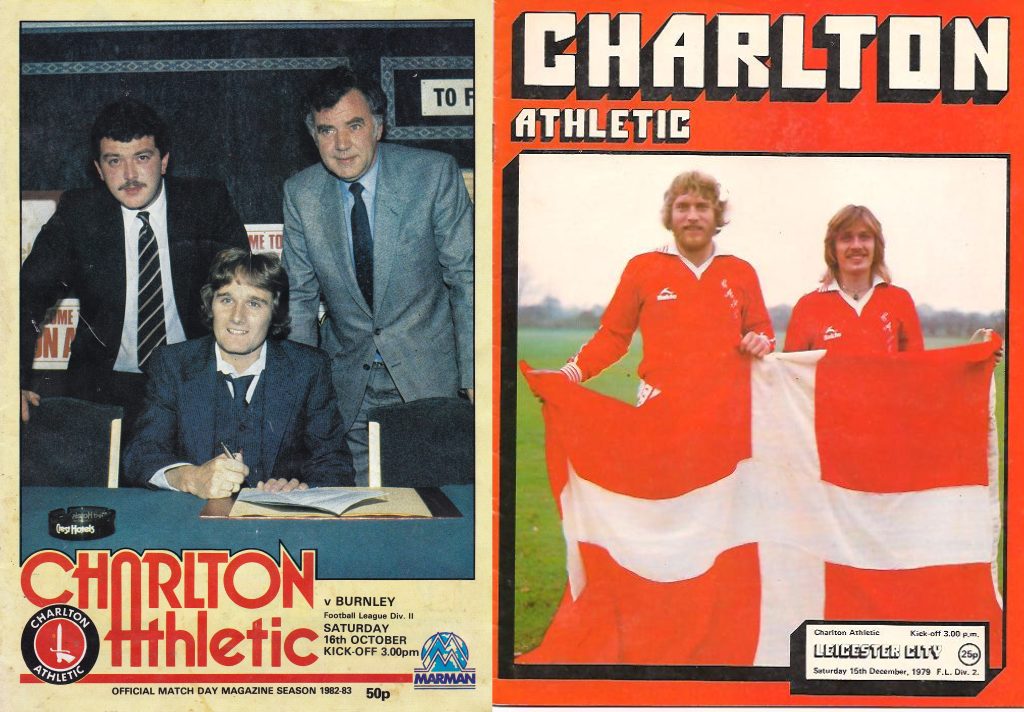
Below (L-R): Bjorn Kristensen; Jesper Olsen; Henrik Mortensen
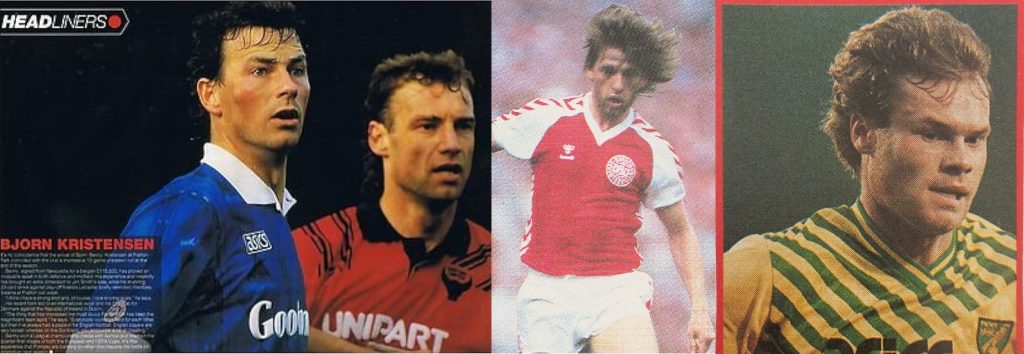
Later Danish arrivals included defender Kent Nielsen at Aston Villa, while Luton and Norwich also paid large fees for forwards Lars Elstrup and Henrik Mortensen respectively. Club-record signing Elstrup was the bigger success in England. Manchester United returned to Denmark for goalkeeper Peter Schmeichel in August 1991, one of the cornerstones of their success in the 1990s. Nielsen, Elstrup and Schmeichel were all in the squad which surprisingly won the 1992 European Championship. A scorer in their final win over Germany, midfielder John Jensen joined Arsenal for the start of the Premier League in August 1992. Unfortunately the signings of Jensen and Norwegian Pål Lydersen for Arsenal proved to be the downfall of George Graham, who was found to have accepted illegal payments from Lydersen’s compatriot, the agent Rune Hauge.
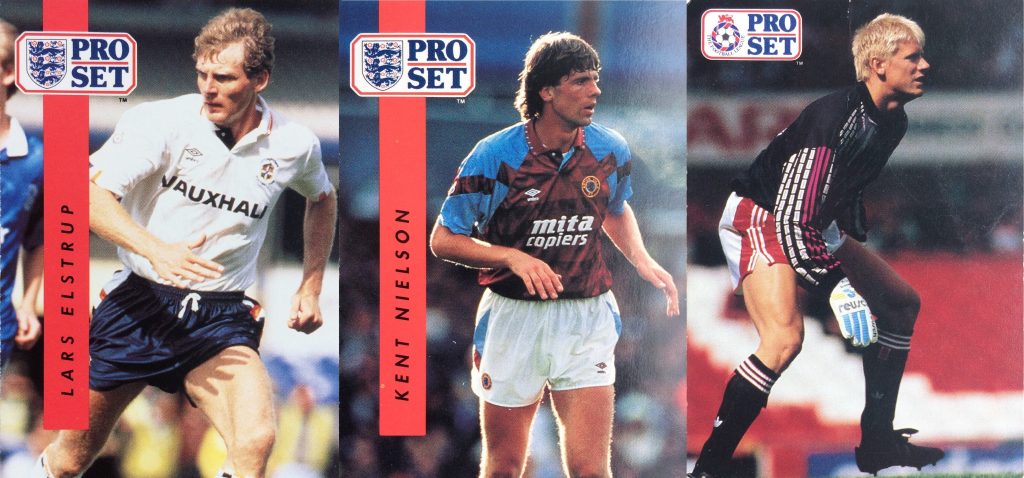
Finland’s first representative in the Football League was goalkeeper Mauno Rintanen, Finnish player of the year in 1953, who had a short stint at Hull City in 1956-57. He was followed more than two decades later by international midfielder Pertti Jantunen at then-top division Bristol City in 1979, who had earlier been the first Finn to play in Spain with CD Málaga. A longer stay was enjoyed by Aki Lahtinen (twice Finnish player of the year) at Notts County from 1981-85. Striker Jari Rantanen – a scorer against England in a drawn 1985 World Cup qualifier – was at Leicester City briefly later in the decade. More Finns arrived in the following years, with goalkeeper Jussi Jääskeläinen enjoying the longest stay and Liverpool duo Sami Hyypiä and Jari Litmanen probably the country’s highest-profile Premier League representatives.
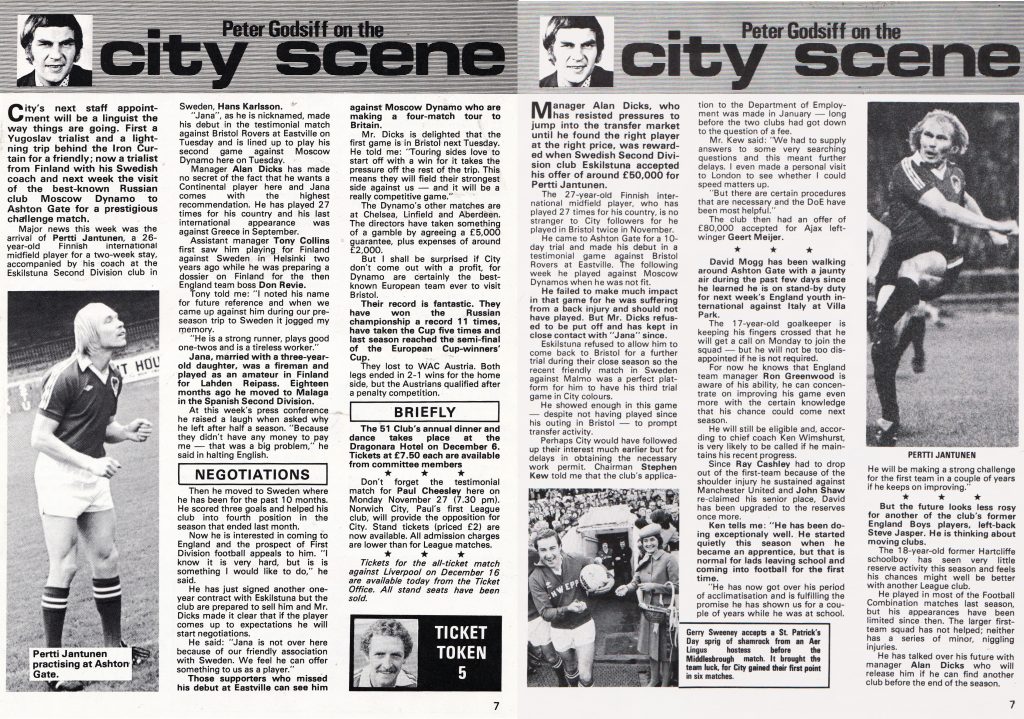
Below (L-R): Toddy Orlygsson; Siggi Jonsson; Gudni Bergsson
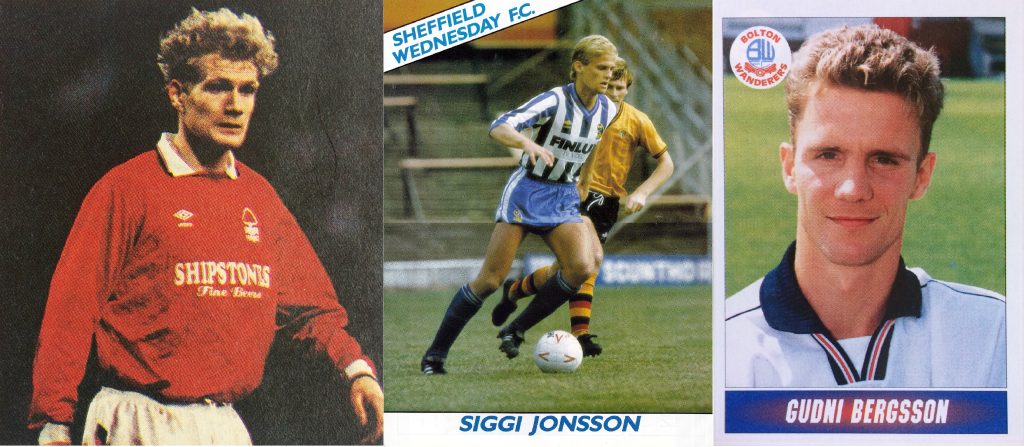
The outpost of Iceland was an unlikely spot from which Albert Guðmundsson went on to play in the top leagues of England, France, and Italy, via a short wartime stay at Rangers. He played two games for Arsenal in 1946 as an amateur before moving on to Nancy, AC Milan, Racing Club in Paris and Nice. Not until the 1980s was he followed to the Football League by compatriots Siggi Jonsson, Guðni Bergsson and Toddy Örlygsson. Jonsson had made his international debut at age 16 and was not yet 20 when he joined Sheffield Wednesday in 1985, later moving to Arsenal under George Graham. Sadly his time at Arsenal was plagued by injury. Defender Bergsson was signed by Terry Venables for Spurs in 1988, spending seven years at White Hart Lane and then moving to Bolton, where he played until retiring at 37 in 2003. Along the way he earned 80 caps for his country, often as captain. Midfielder Örlygsson was another Brian Clough signing for Nottingham Forest in 1989, having arguably his best spell in England with Stoke in the mid-90s before moving on to Oldham.

Below (L-R): Kjetil Osvold; Gunnar Halle
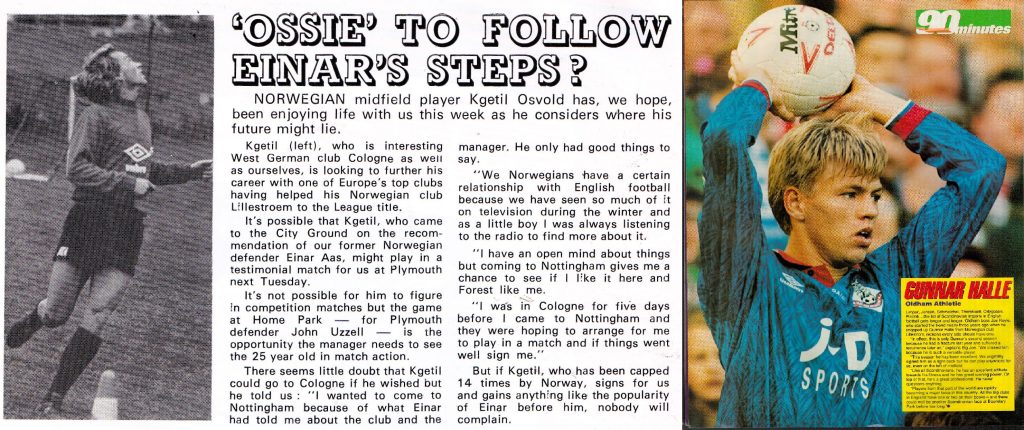
Norway was slower to emerge as a footballing power than its neighbours – Danish-born Karl Hansen was the first Norwegian in the Football League, at Huddersfield in 1949. Defender Einar Jan Aas had a trial at Arsenal before he was signed by Brian Clough for Nottingham Forest from Bayern Munich in 1981. After Norway stunned England in a World Cup qualifier that year, another defender, Åge Hareide, soon gained a work permit to join Manchester City. Manager John Bond described his versatile £10,000 signing for Molde as “one of those reliable bread and butter players upon which all good teams depend.” However a year later, with City struggling to pay a £15,000 bonus due after 30 appearances, Hareide moved to Norwich.
Both Aas and Hareide struggled with injury, and it was several years before a stream of top players began to move to the First Division. Firstly, Clough returned to Norway to sign midfielder Kjetil Osvold in 1987, although that move didn’t work out. With the national team steadily improving towards the end of the 1980s, the moves of Erland Johnsen to Chelsea and Erik Thorstvedt to Tottenham set a trend which grew rapidly over the following decade. Both served their clubs well into the 90s. Oldham manager Joe Royle was delighted with Gunnar Halle’s arrival from Lillestrøm in 1991. Like Bond a decade earlier, he praised the player’s versatility and “excellent attitude” as “a great professional”. Halle was one of ten English-based players in Norway’s 1994 World Cup 22, with several other squad members later to follow.
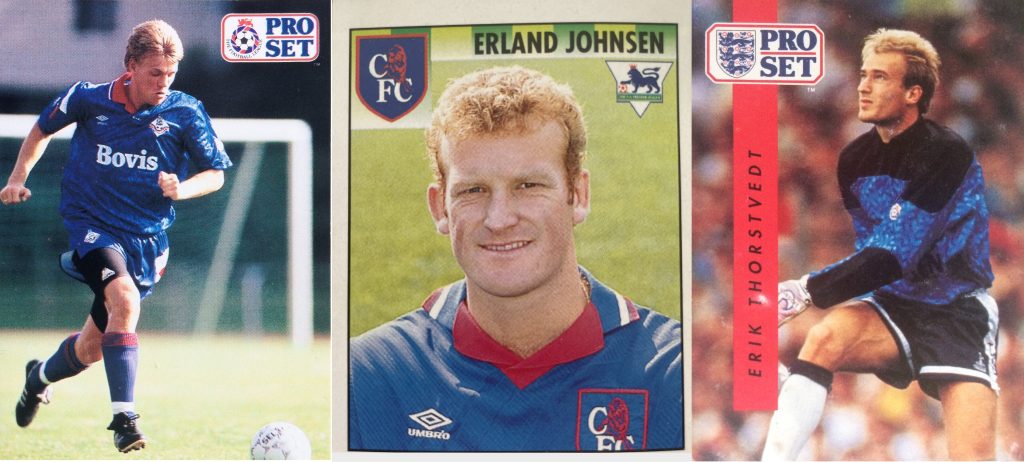
Arguably the strongest post-war nation in Scandinavia, Sweden provided Dan Ekner (Portsmouth, 1949) and Hans Jeppson (Charlton, 1951) to the Football League. The next arrival, Jan Möller, found himself at Bristol City as they began their fall from the top division to the bottom. Möller had played under Bobby Houghton at Malmö when they reached the 1979 European Cup Final, but neither Houghton nor his assistant Roy Hodgson were able to arrest the decline at Ashton Gate. Malmö team-mate, midfielder Röbert Prytz failed to get a work permit to sign for Stoke in 1982, as he later joined Rangers. Manchester City had run into the same problem in 1980 when trying to bring in uncapped striker Kurt ‘Nanne’ Bergstrand. It was the summer of 1989 before the next Swedes arrived, on either side of Merseyside.
Central defender Glenn Hysén had starred in two goalless World Cup qualifiers with England, prompting Liverpool to sign him from Fiorentina under the noses of Manchester United. He played a key role in Liverpool’s title-winning side in his first season. Meanwhile Everton unveiled creative midfielder Stefan Rehn, highly regarded but unable to make any impression at Goodison Park. In contrast, right-back Roland Nilsson arrived at Sheffield Wednesday that season and went on to establish himself in English football. Arsenal brought Anders Limpar from Cremonese for £1m the following summer, and like Hysén he was to win the title in his first season. He later moved to Everton, where he would add an FA Cup winners’ medal in 1995. Limpar, Nilsson and Rehn were in Sweden’s 1994 World Cup squad which finished third in the USA, and many of their team-mates would follow them to England over the following years.
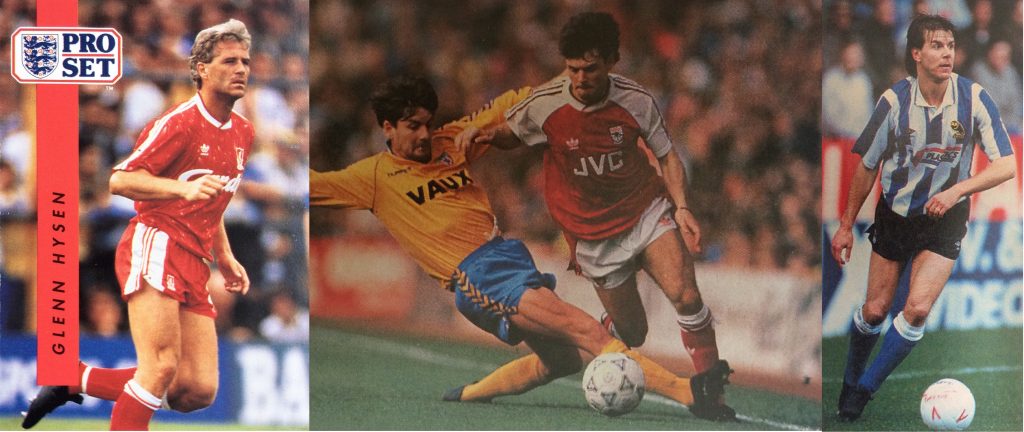
Below: Stefan Rehn (Shoot! magazine, summer 1989)
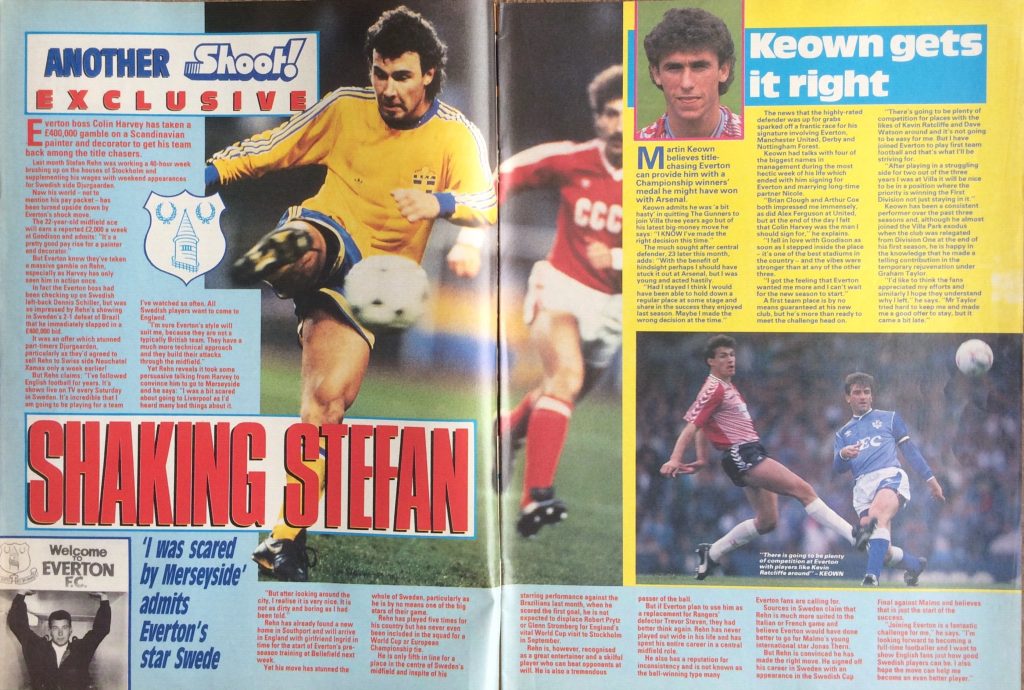
Hysén and Limpar were chosen to represent the Football League against Serie A in January 1991. Ahead of and during the first Premier League season of 1992-93, the next influx of players from Scandinavia and the Nordic nations arrived: alongside Jensen, another Danish European Champion in Torben Piechnik at Liverpool, who also signed Norwegian Stig-Inge Bjørnebye – his compatriot Henning Berg began a successful stay in England, joining Blackburn together with Swede Patrik Andersson.
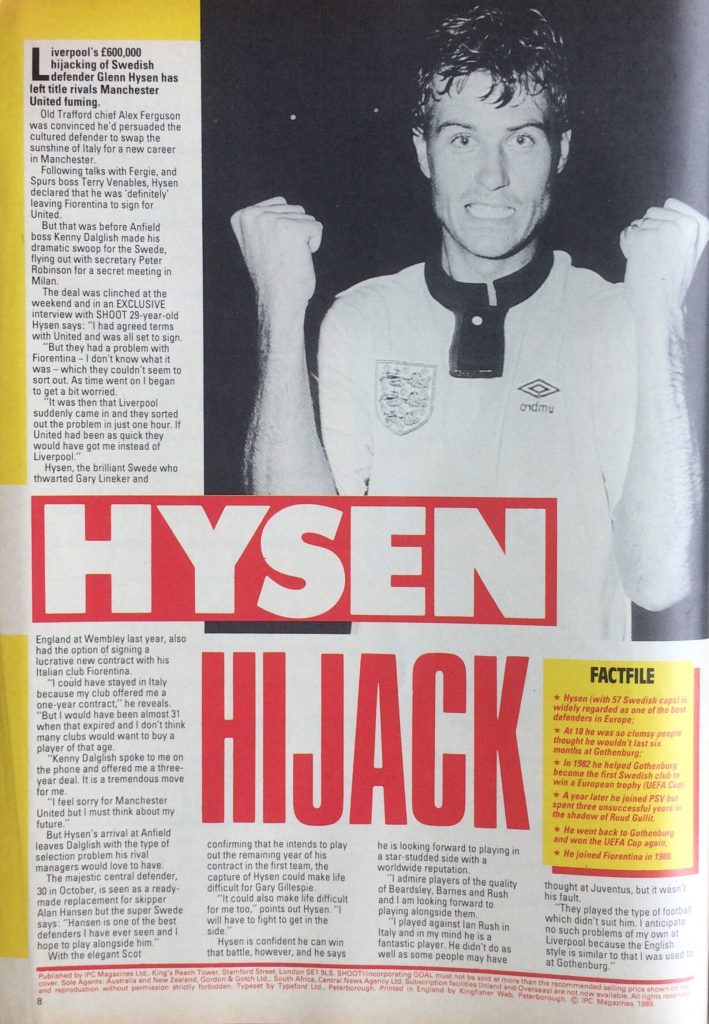
Several images courtesy of Peter Lythe, Miles McClagan (@TheSkyStrikers) & Shahan Petrossian (Soccer Nostalgia).
The arrival of foreign players to the Football League from Scandinavia and beyond at the end of the 1970s is one of the topics discussed in my book Before the Premier League: A History of the Football League’s Last Decades.
